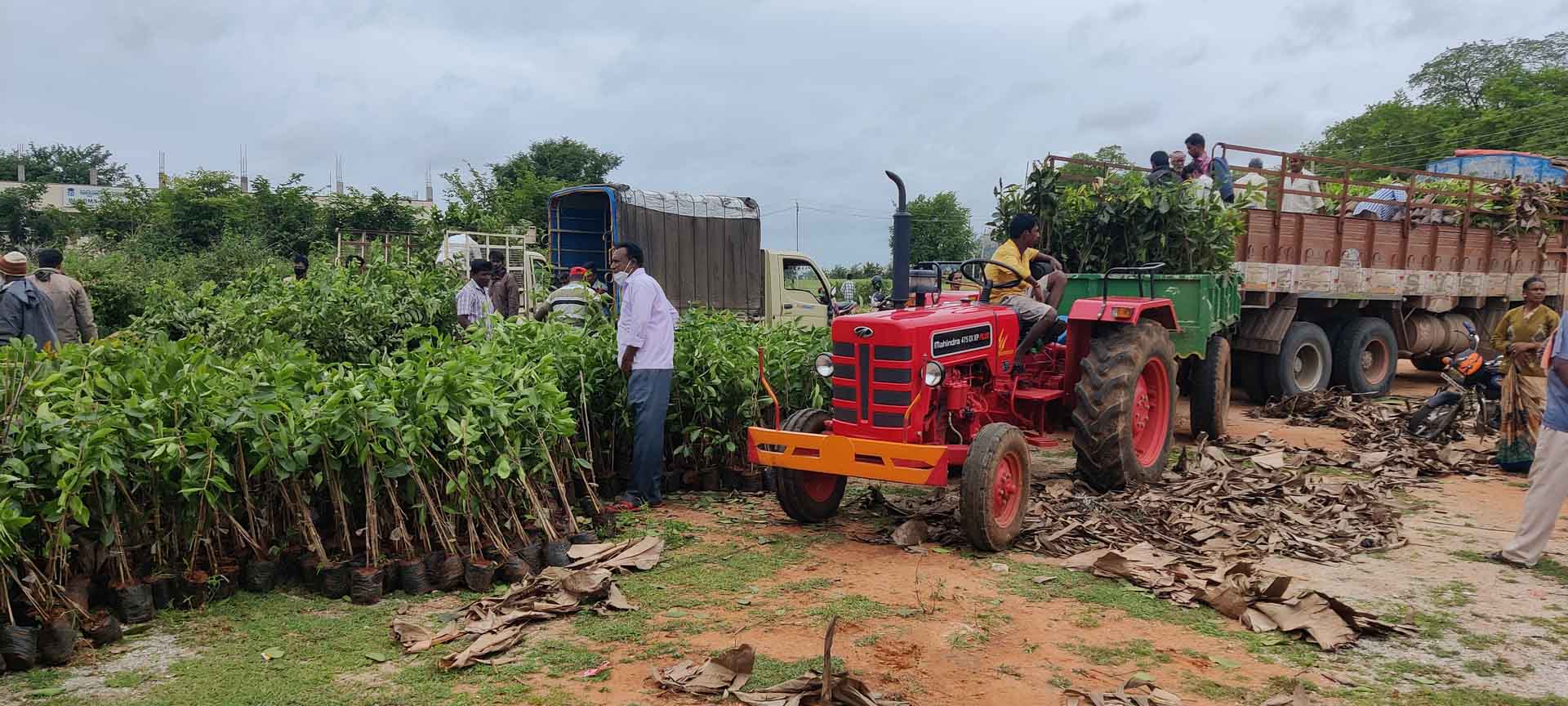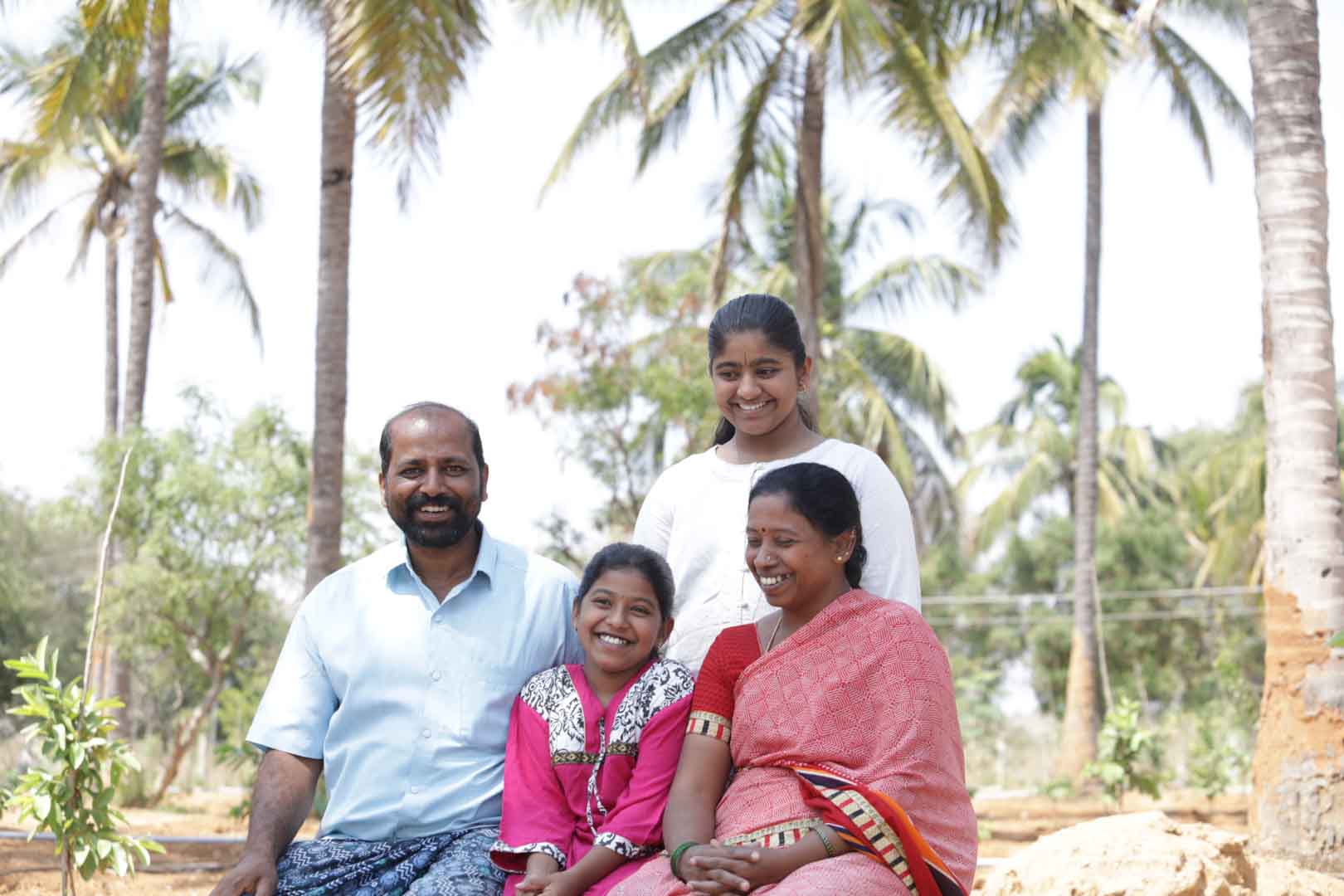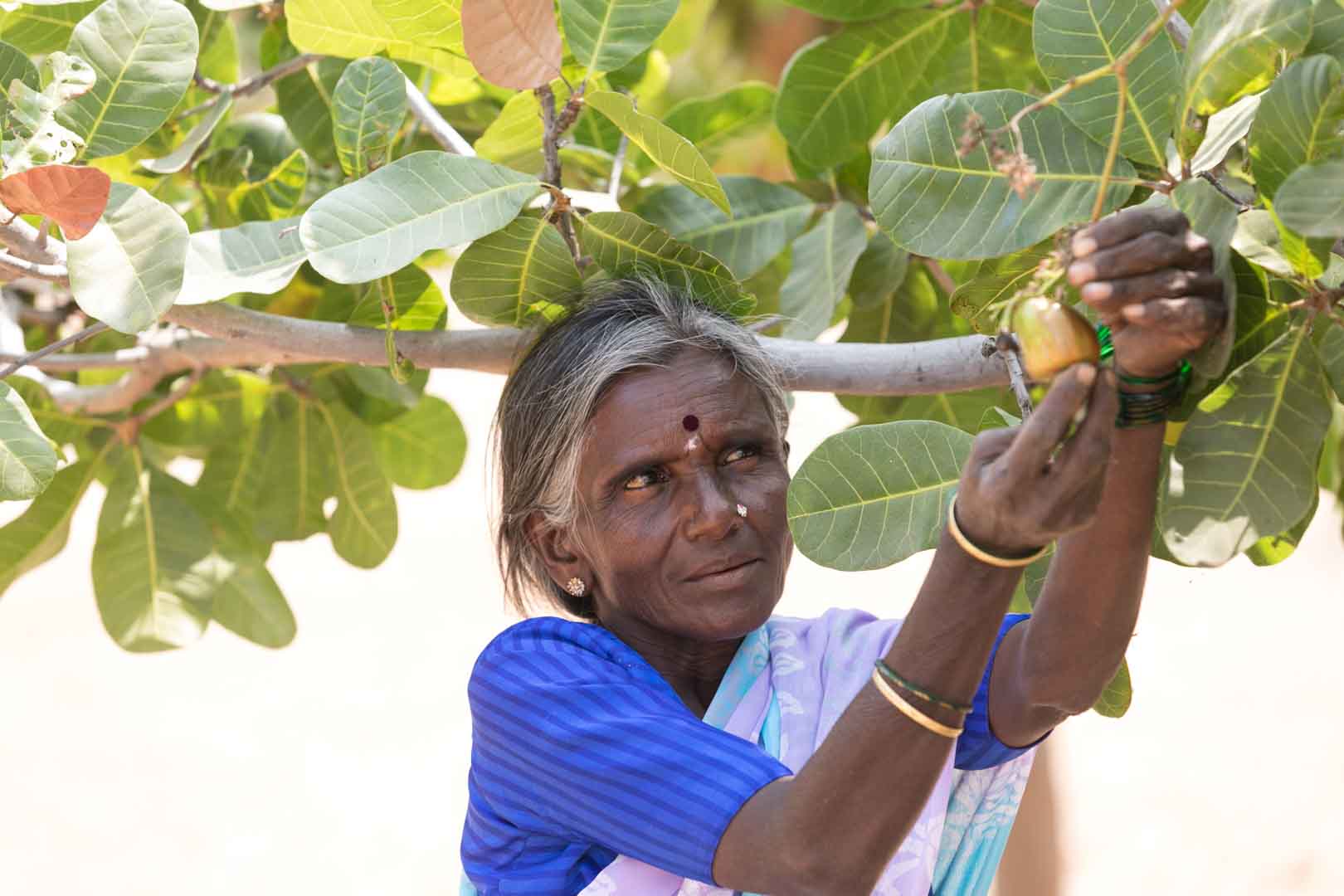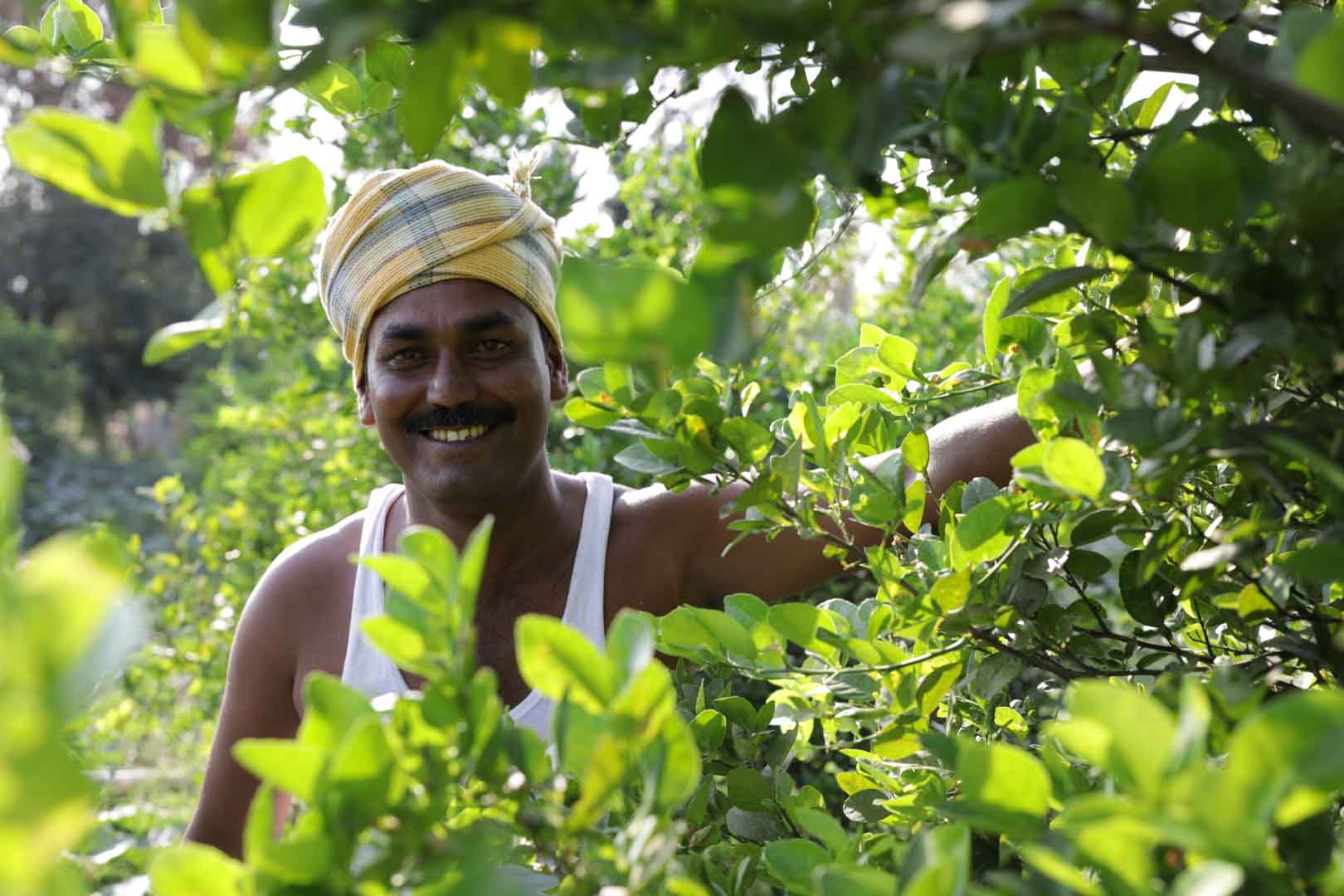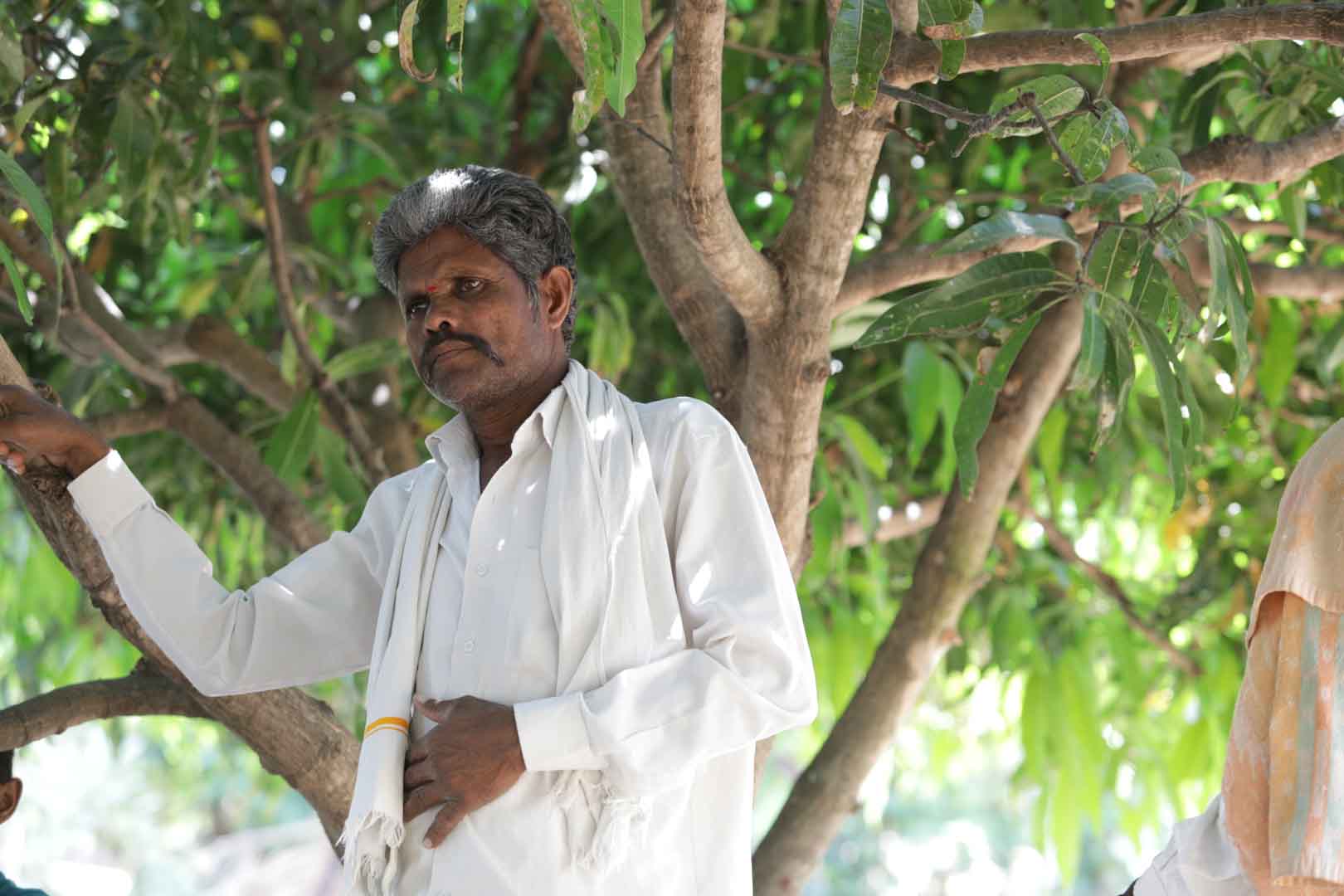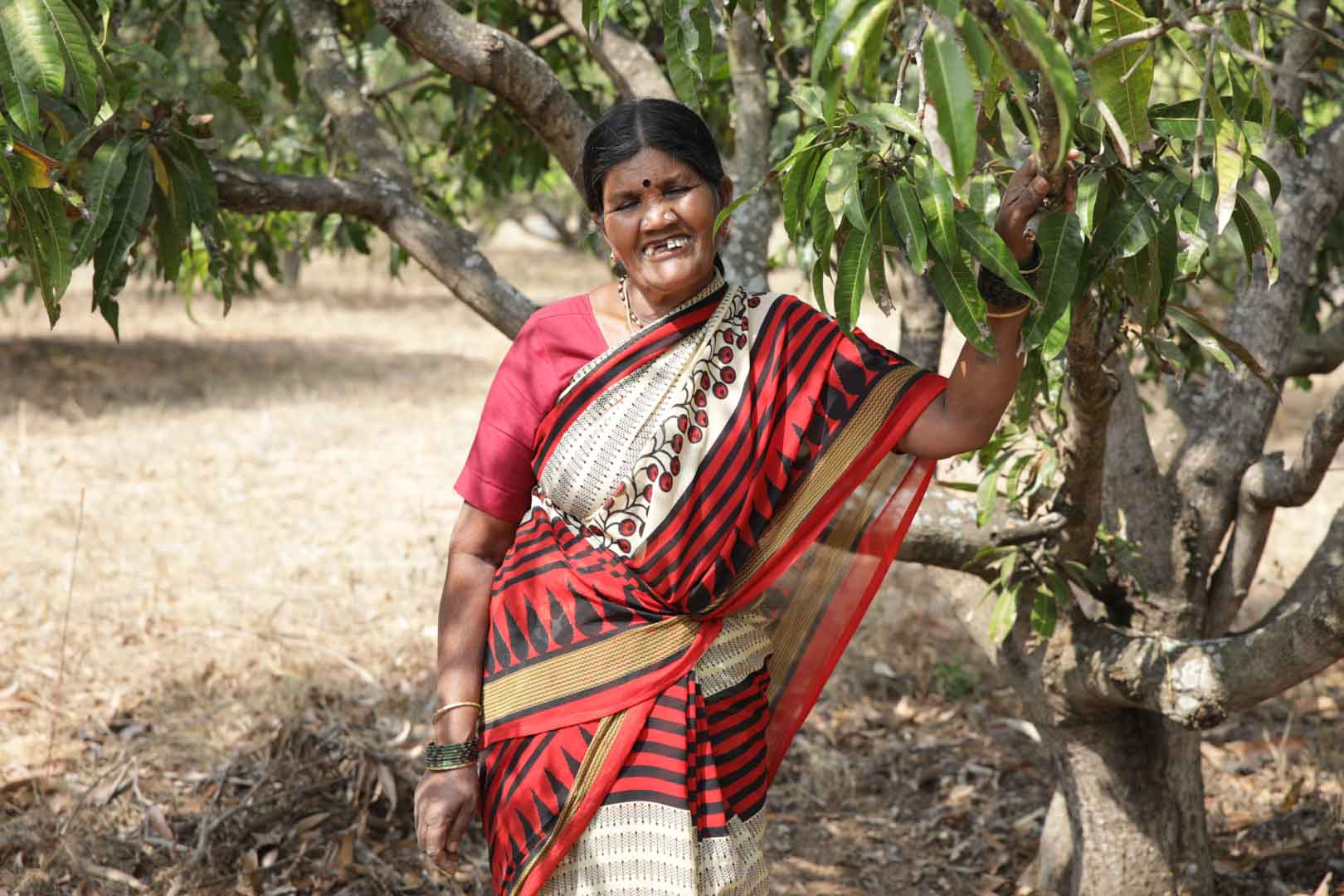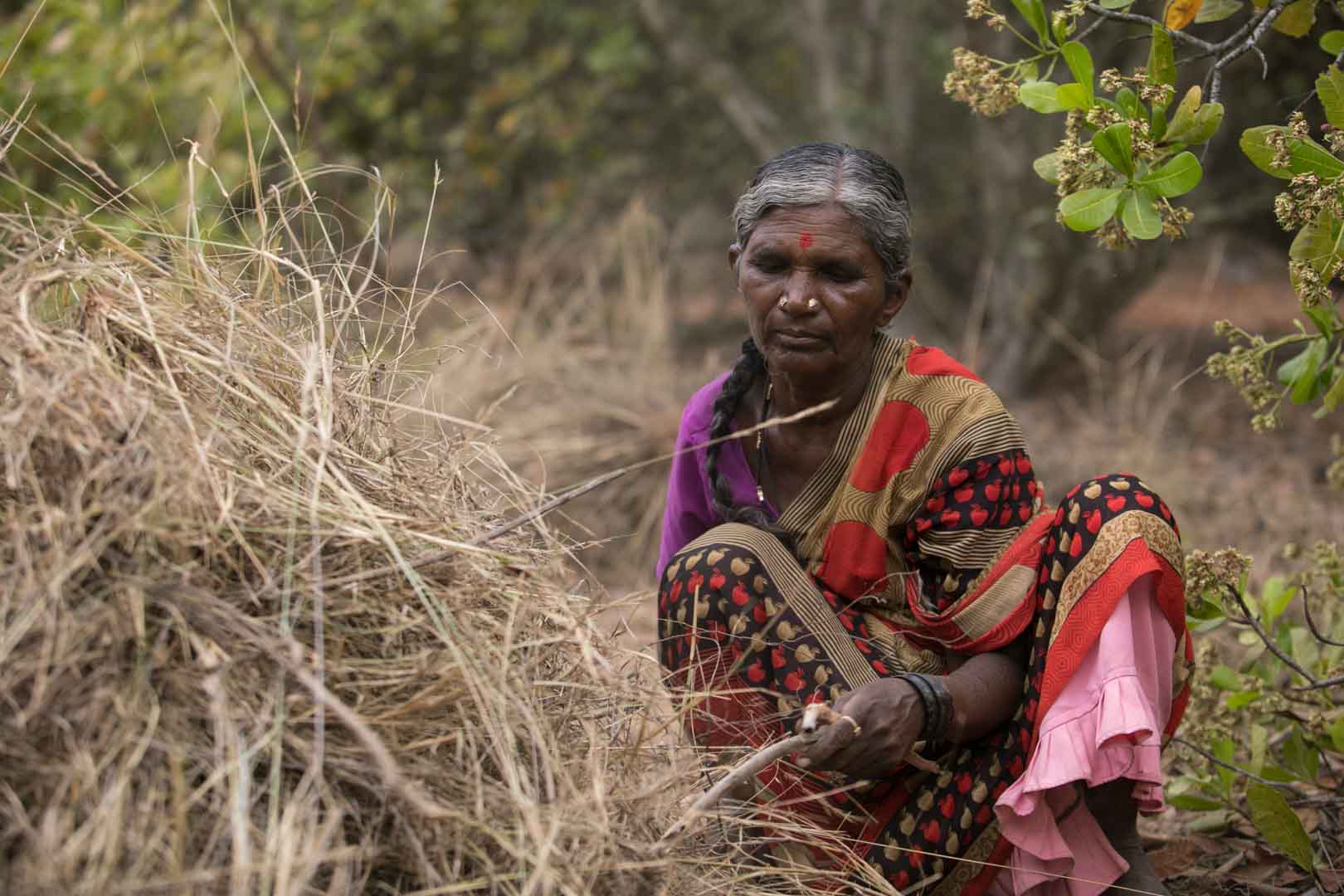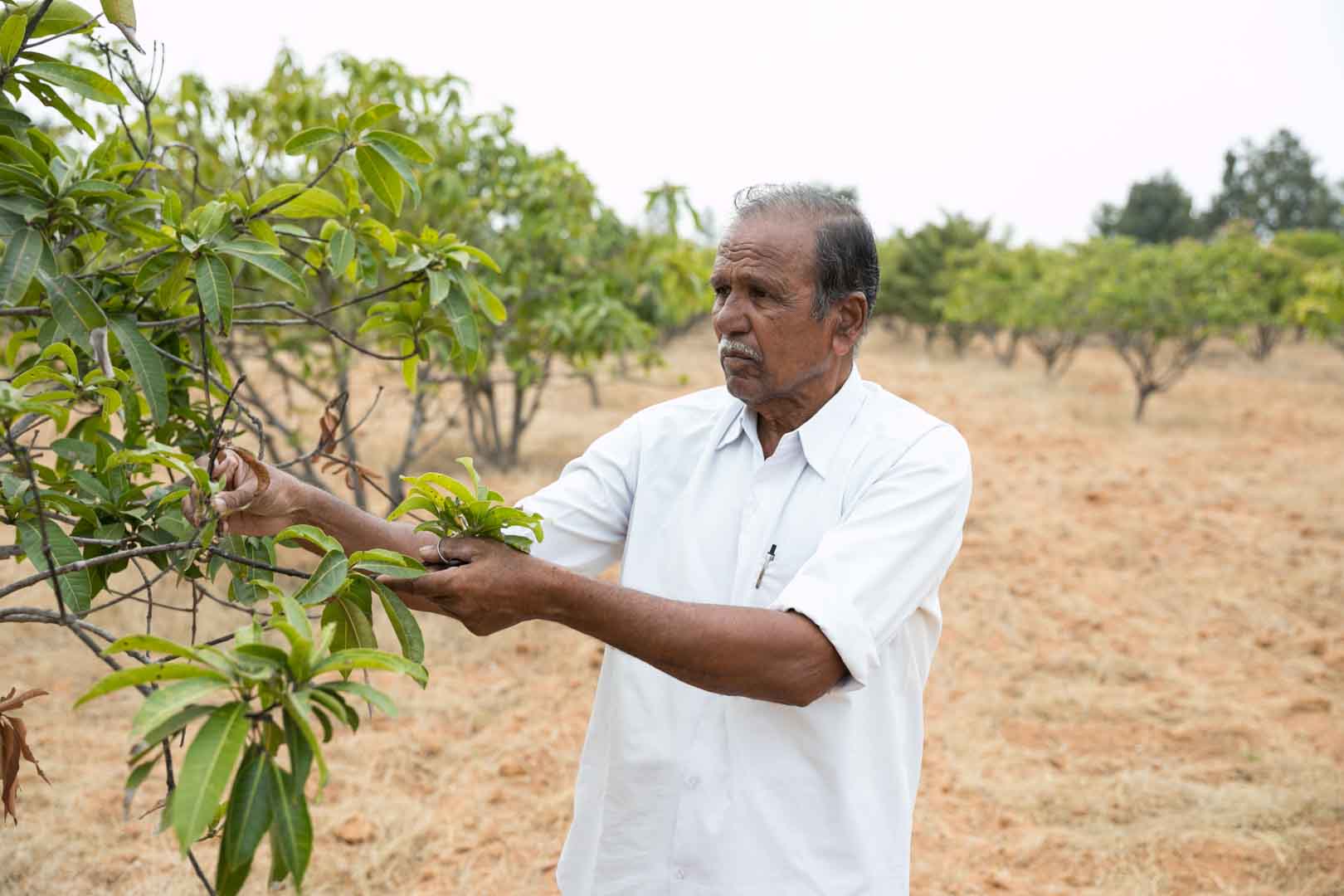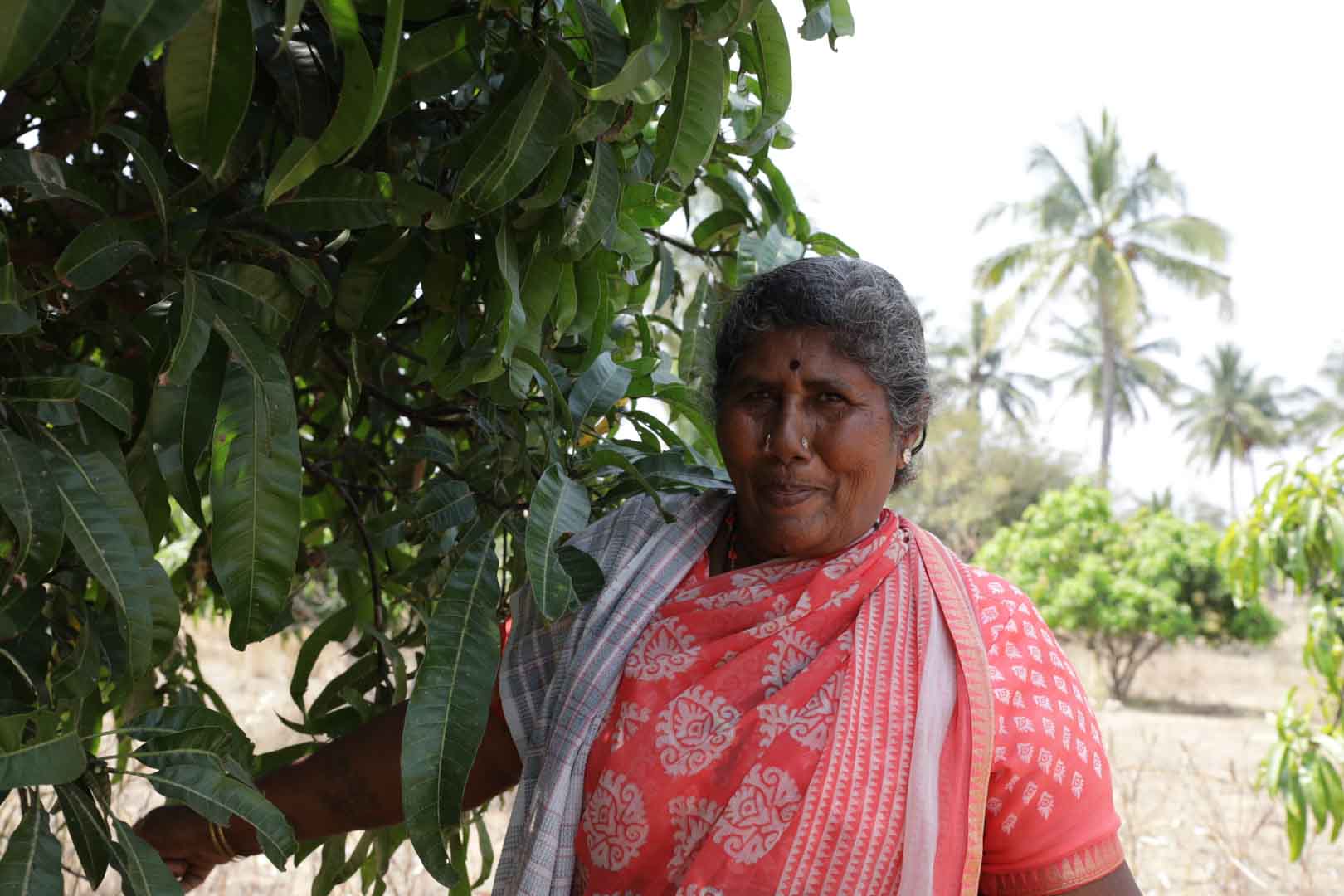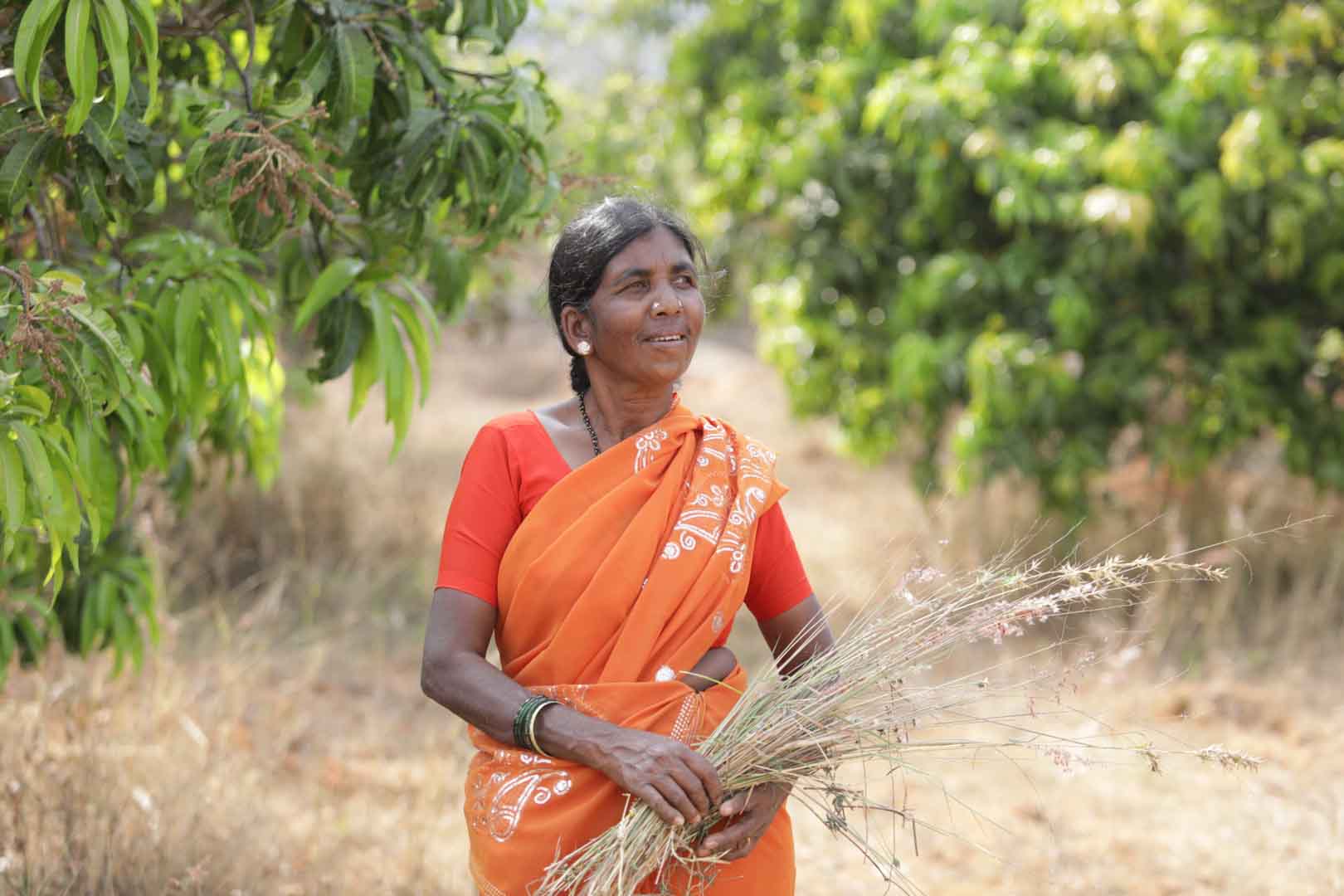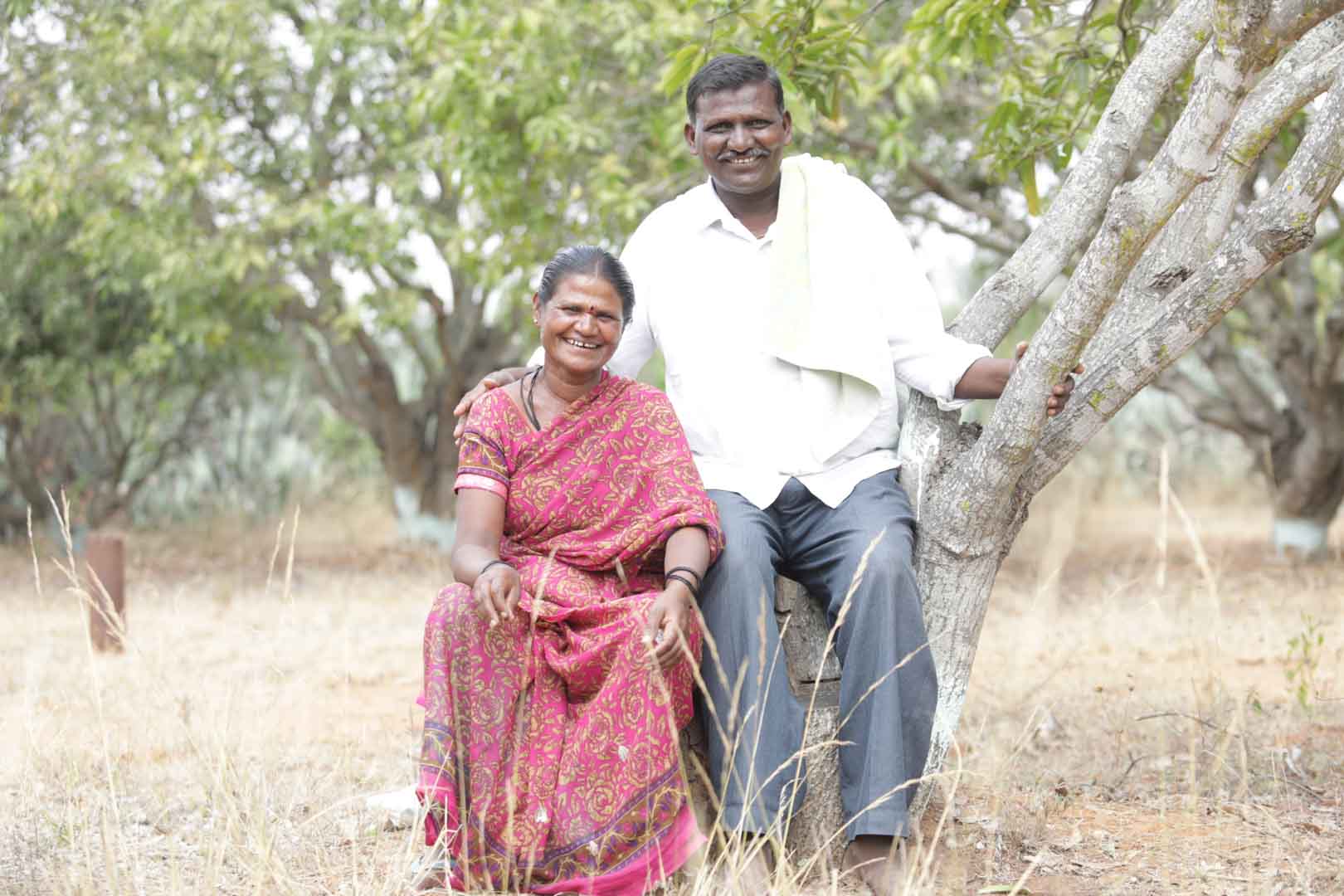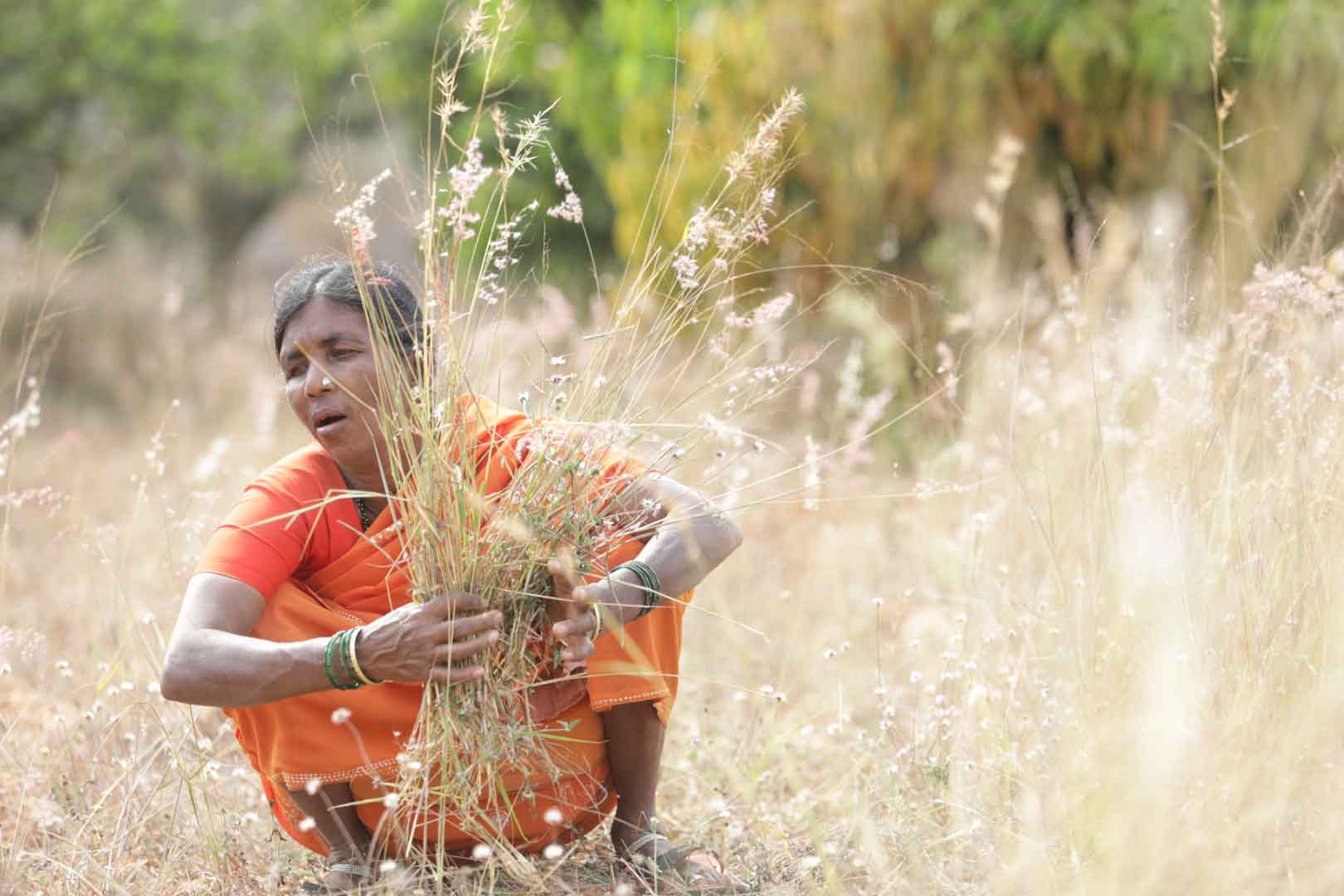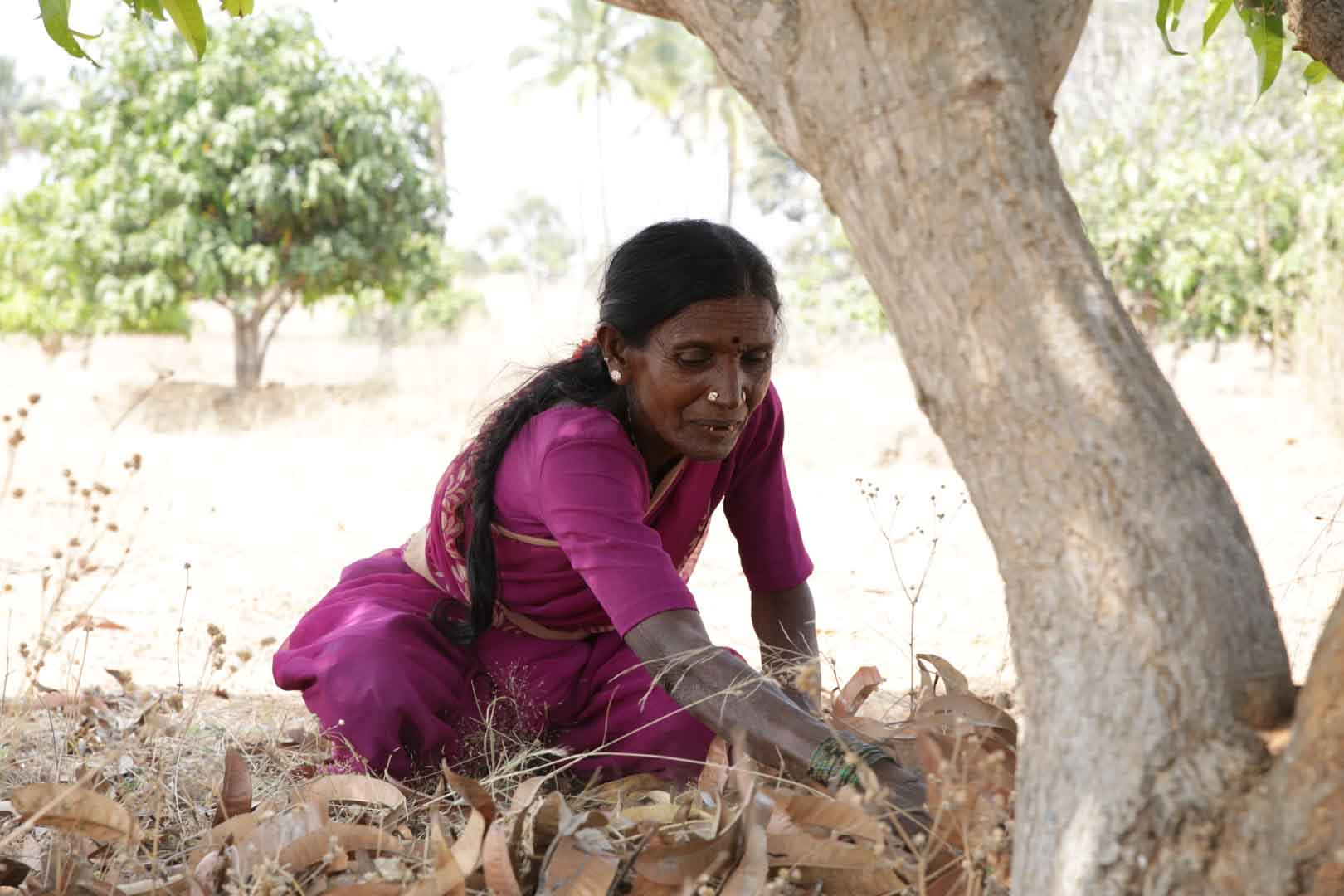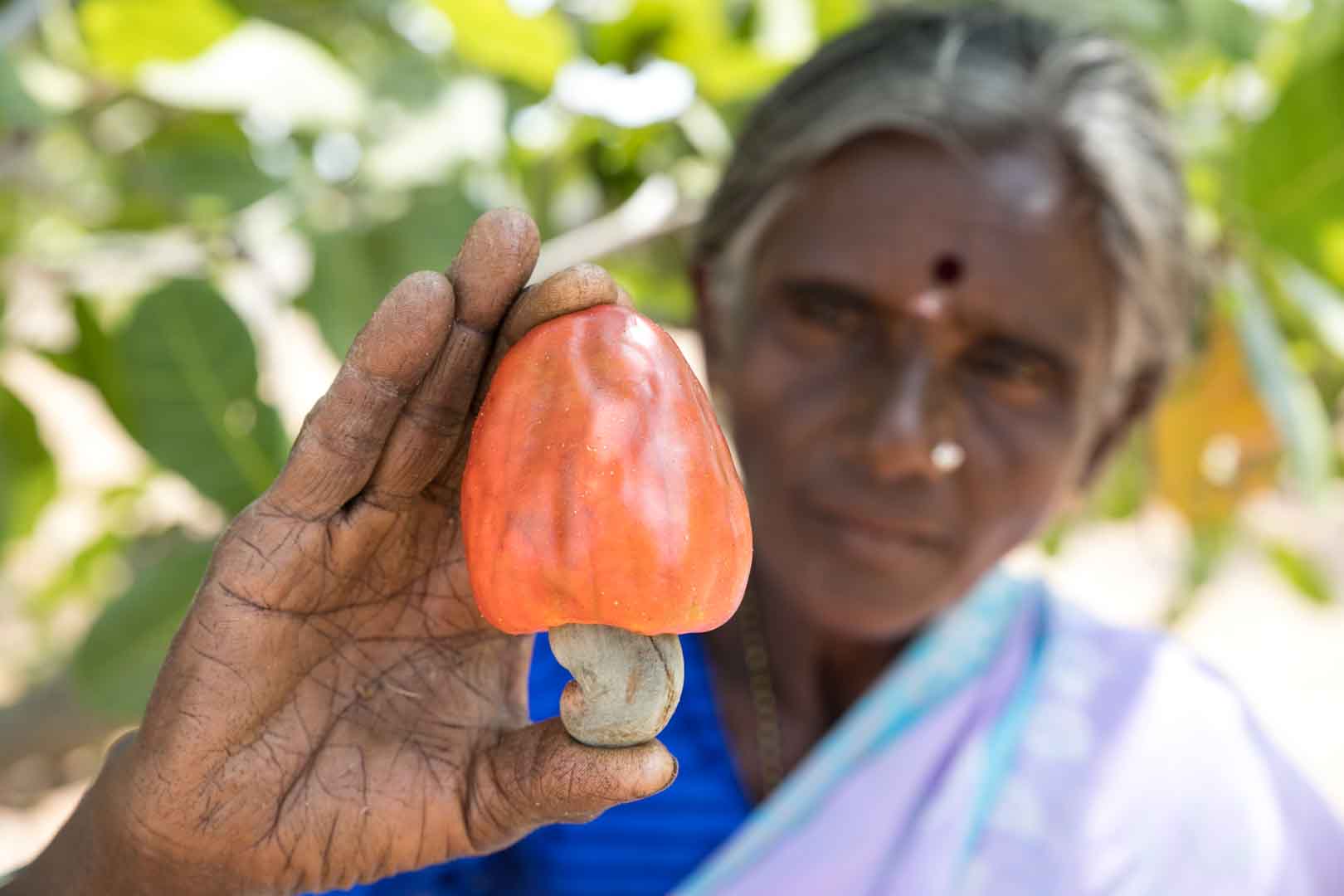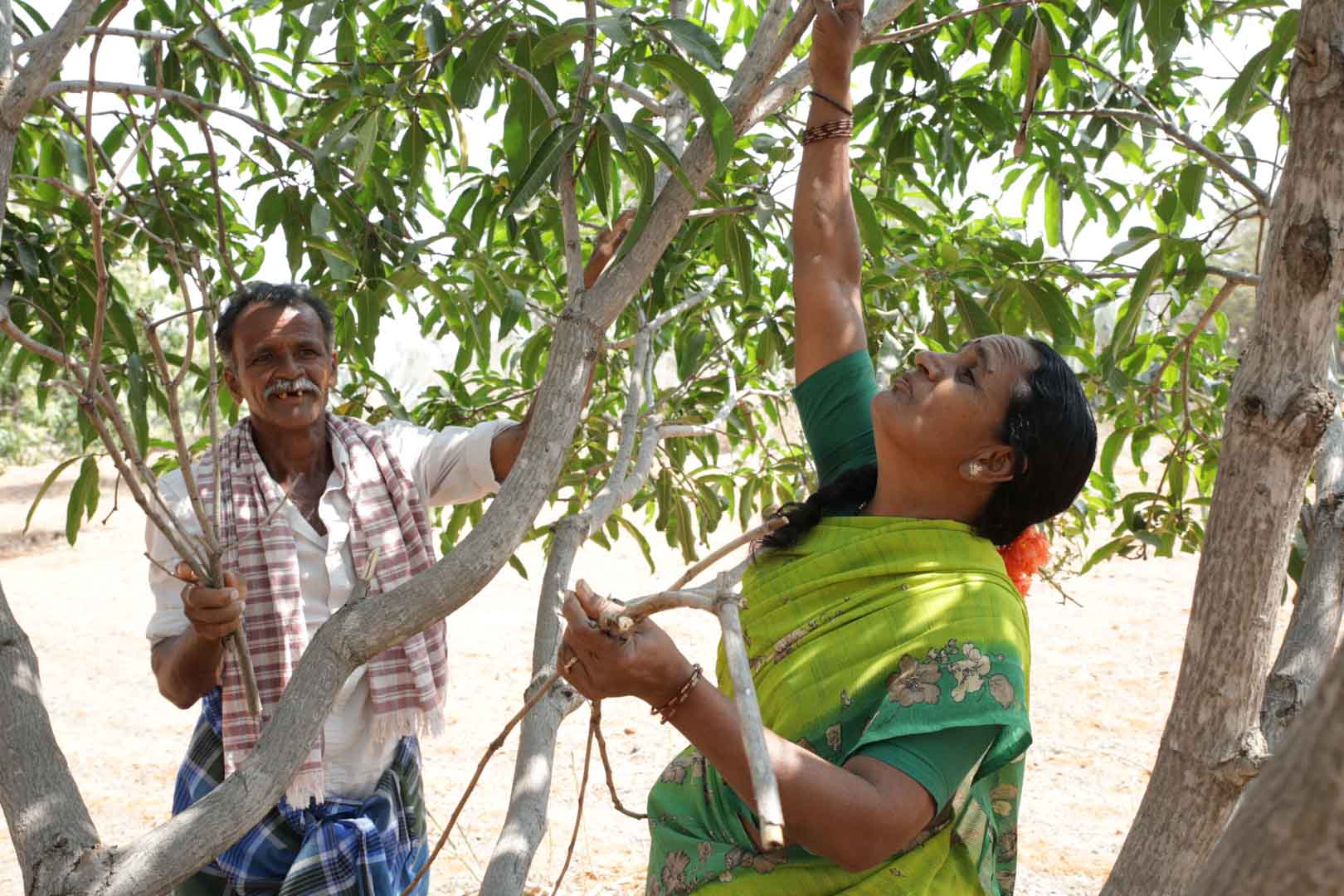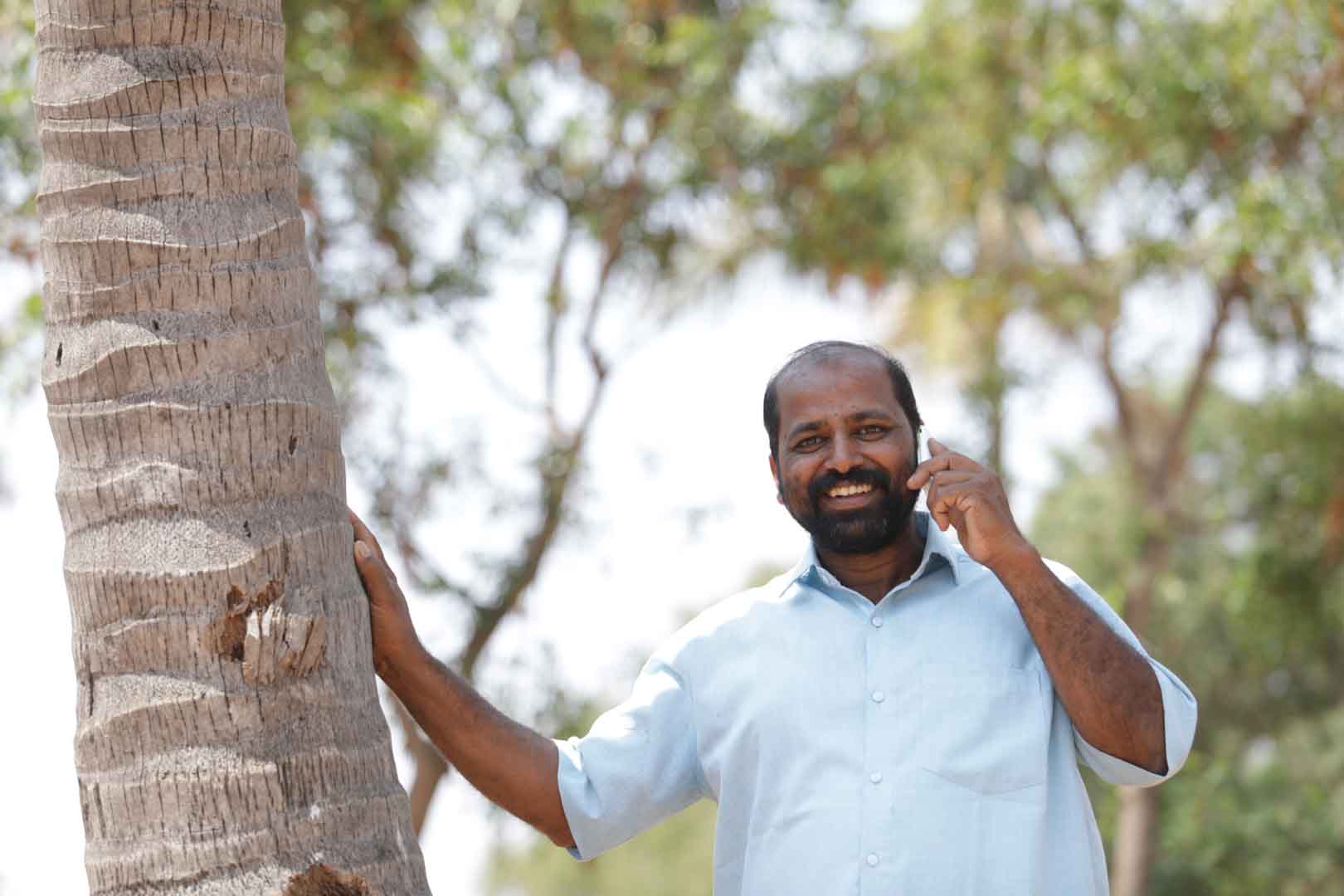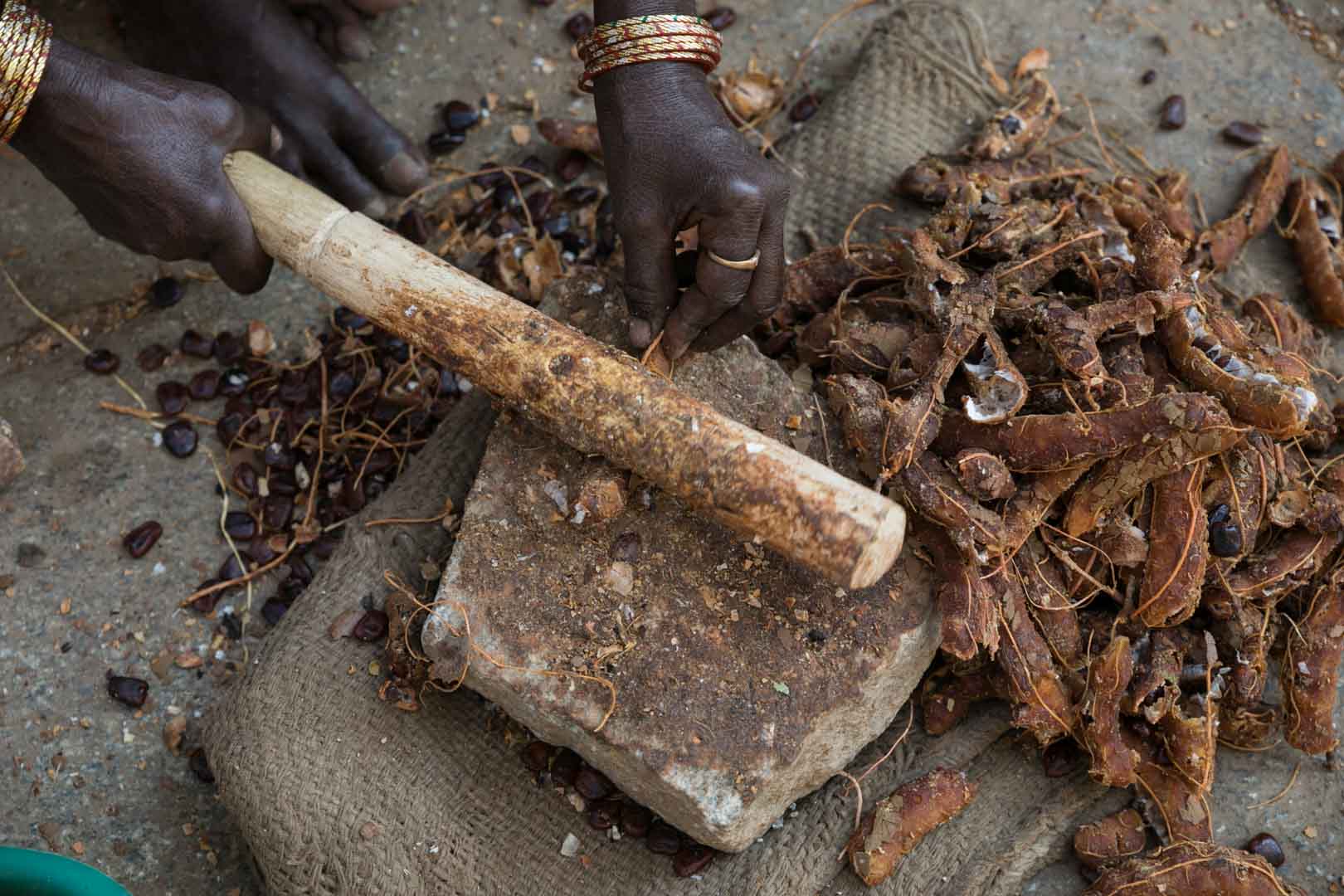Climate protection and self-sufficiency through afforestation
The project involves reforesting degraded agricultural land in five so-called taluks of the Chickballapur district in the Indian state of Karnataka. The productivity of the land is very low due to scarce water resources and poor soil conditions for agriculture. The land belongs to the poorest farmers and agricultural workers in the region, who have to make a living from cultivating this land.
The project supports a total of 1,296 farming families from 155 villages in cultivating and reforesting the land. They plant mango, cashew, silver oak, tamarind, jamun and other seedlings and protect them from animal browsing by fixing thorny branches. During the rainy season in September, they dig deep pits and fill them with sand, red soil and manure. They have also installed water tanks and hired vehicles to fetch water from nearby wells.

Forests are essential in our lives and are among the planet's most important carbon sinks. Besides providing habitats for wildlife, they filter the air, stabilise and protect soils, store water, and contribute to the balance of our climate. However, global forest areas have declined sharply in recent decades due to increasing settlements, agriculture, illegal logging, and raw material extraction. Afforestation, reforestation, and revegetation activities significantly increase a forest’s carbon storage capacity in both the biomass of the forest and in the soil. The storage capacity varies according to the tree species, age, and location.
Experts distinguish these activities in the following way: Afforestation converts non-forested areas into forest ones. Reforestation restores forest areas that have been damaged or deforested in the past. Revegetation increases the vegetation through planting trees, shrubs, or other plants.
Explore our projects
Biochar for Climate Action, Healthy Soils, and Better Harvests

A certified climate project combined with additional commitment

Expansion of renewable energy generation in Asia

Ceramic water filters save CO2 and improve health

Improved cookstoves worldwide – for better health and cleaner air

A certified climate project combined with additional commitment

Powering access to renewable energy in Africa

A certified climate project combined with additional commitment

Restored ecosystems remove carbon

Turning degraded farmlands into healthy ecosystems

Improved cookstoves - better for health and the environment
